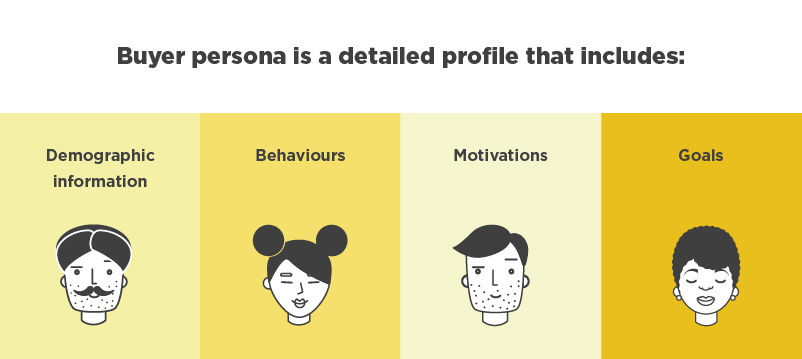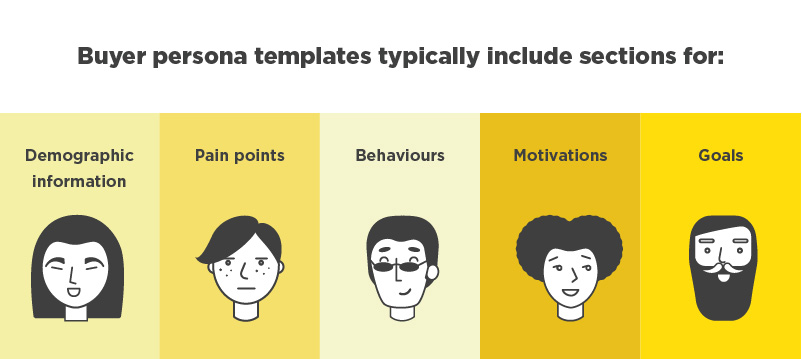Creating Buyer Personas for Your Business
Creating buyer personas for your business involves understanding and defining your target audience. By creating buyer personas, you can get a clear picture of the characteristics, motivations, and goals of your ideal customer. This information is crucial in creating targeted marketing strategies, improving the customer experience, and making informed business decisions.
The process of creating buyer personas typically involves conducting market research, analyzing customer data, and gathering feedback from current customers. Once you have a deep understanding of your target audience, you can create detailed profiles of your buyer personas, including demographic information, pain points, and purchasing habits. This information can be used to tailor your marketing efforts, product offerings, and sales approach to better meet the needs of your customers.
What is a buyer persona?
A buyer persona is a fictional representation of your ideal customer based on market research and real data about your existing customers.
The purpose of creating a buyer persona is to understand your target audience on a deeper level and to tailor your marketing, sales, and customer service strategies to better meet their needs. By having a clear understanding of your buyer personas, you can make informed business decisions and develop effective communication strategies that resonate with your target audience.
A buyer persona can include information such as:
- Age
- Gender
- Income
- Education level
- Job title
- Location
It can also delve into personal details such as hobbies, purchasing habits, and pain points. This information can help you to better understand what motivates your target audience, what their goals are, and what challenges they face.
You can use this information to create targeted marketing campaigns, design user-friendly websites, and develop products that meet the specific needs of your target audience. By creating buyer personas, you can ensure that all aspects of your business are aligned with the needs and desires of your ideal customer.
Types of Buyer Persona
There are various types of buyer personas that a business can create, each with its own unique set of characteristics and traits. The most common types of buyer personas include:
1. The traditional buyer persona:
A comprehensive profile of your ideal customer that includes demographic information, psychographic information, and behavioural information.
2. The customer avatar:
A more focused representation of your ideal customer, often used in online marketing and product development.
3. The marketing persona:
A persona specifically created for marketing purposes, focusing on the customer’s purchasing journey and the channels they use to make a purchase.
4. The lifestyle persona:
Focuses on the customer’s values, interests, and lifestyle habits. This type of persona can be useful for businesses that want to market to customers based on shared values and lifestyle choices.
5. The technology persona:
Another type of buyer persona, focusing on the customer’s technology preferences and usage habits. This type of persona can be useful for technology-focused businesses, such as software or hardware companies.
6. The pain point persona:
A type of buyer persona that focuses on the specific pain points or challenges faced by the customer, and how the business can address these needs. This type of persona can be useful for businesses that want to position themselves as problem-solvers for their customers.
Why is buyer personas important to business?
Buyer personas are important to businesses because they provide a deep understanding of the target audience. This information can be used to inform all aspects of the business, from product development to marketing to customer service. By knowing the motivations, goals, and pain points of the target audience, a business can tailor its offerings and communication strategies to better meet the needs of its customers. This results in a more targeted, effective, and efficient marketing strategy, which can lead to increased conversions and customer loyalty.
Another reason buyer personas are important is that they help businesses to focus their efforts. Without a clear understanding of the target audience, businesses can end up spreading themselves too thin and not effectively reaching their desired customers. By creating buyer personas, businesses can identify their ideal customers and focus their efforts on attracting and retaining them. This can result in a more efficient use of resources and a higher return on investment.
Finally, buyer personas also play a critical role in the customer experience. By understanding the needs and motivations of the target audience, businesses can create a customer experience that is tailored to their needs. This can lead to increased customer satisfaction and loyalty, as well as improved brand reputation. A positive customer experience can also lead to increased word-of-mouth marketing, which can help a business to reach new customers and grow its customer base. In today’s highly competitive business environment, having a deep understanding of the target audience and providing a personalised customer experience is more important than ever.
Which parts of your organisation can benefit from buyer personas?
There are several parts of an organisation that can benefit from buyer personas, including product development, marketing, and sales.
● Product development:
Buyer personas can help to ensure that new products or services meet the needs and desires of the target audience. For example, a technology company might create a buyer persona of a busy professional who values convenience and efficiency. This buyer persona could inform the development of a new productivity app that is specifically designed to help busy professionals manage their time more effectively. By creating a product that is aligned with the needs of the target audience, the company is more likely to see success in the market.
● Marketing:
Buyer personas can be used to inform targeted campaigns that resonate with the target audience. For example, a fashion retailer might create a buyer persona of a young, fashion-conscious woman who values affordability and style. This buyer persona could inform a marketing campaign that showcases the retailer’s latest collection of affordable and stylish clothing, using social media and influencer partnerships to reach the target audience. By creating a marketing campaign that is aligned with the values and interests of the target audience, the retailer is more likely to see success in terms of conversions and customer loyalty.
● Sales:
Buyer personas can help to inform the sales approach and ensure that the sales team is equipped with the knowledge they need to effectively engage with the target audience. For example, a B2B software company might create a buyer persona of a busy decision-maker who values efficiency and ROI. This buyer persona could inform the sales team’s approach, ensuring that they focus on demonstrating the ROI of the software and how it can help the decision-maker to save time and be more productive. By tailoring the sales approach to the needs and motivations of the target audience, the company is more likely to close deals and see success in the market.
How to Create a Buyer Persona?
Creating a buyer persona involves several steps, including conducting research, analysing data, and synthesising information into a comprehensive profile. Here is a step-by-step guide on how to create a buyer persona:
1. Conduct research:
Start by gathering data on your target audience through surveys, customer interviews, and analysis of customer data. This data can include demographic information, psychographic information, and behavioural information.
2. Analyse data:
Use the data collected to identify common themes and patterns in the behaviours, motivations, and pain points of your target audience. This information will help you to understand your customers at a deeper level and inform the creation of your buyer persona.
3. Synthesise information:
Use the information gathered to create a comprehensive profile of your ideal customer. This profile should include information such as age, income, education, occupation, family status, values, interests, pain points, and purchasing habits.
4. Create a visual representation:
Use the information in the buyer persona profile to create a visual representation of your ideal customer, such as a character or illustration. This can help to bring the buyer persona to life and make it easier for others in the organisation to understand and remember.
5. Validate and refine:
Share your buyer persona with others in the organisation and gather feedback. Continuously validate and refine the buyer persona as you gather more information about your target audience.
By following these steps, you can create a comprehensive buyer persona that provides a deep understanding of your target audience and informs all aspects of your business. It’s important to keep in mind that buyer personas are not static, and should be regularly updated as you gather more information and your target audience evolves.
Who should be involved in creating your buyer personas?
Creating a buyer persona involves multiple perspectives and departments within an organisation, and it’s important to have a cross-functional team involved in the process. The following are some key stakeholders who should be involved in creating your buyer personas:
1. Marketing:
The marketing team is responsible for creating and executing campaigns that reach the target audience, so they should be involved in creating buyer personas to ensure that their campaigns are aligned with the needs and motivations of the target audience.
2. Sales:
The sales team is responsible for engaging with the target audience and closing deals, so they should be involved in creating buyer personas to ensure that their sales approach is aligned with the needs and motivations of the target audience.
3. Product Development:
The product development team is responsible for creating products that meet the needs of the target audience, so they should be involved in creating buyer personas to ensure that their products are aligned with the needs and desires of the target audience.
4. Customer Service:
The customer service team is responsible for engaging with customers and resolving their issues, so they should be involved in creating buyer personas to ensure that their customer service approach is aligned with the needs and desires of the target audience.
5. Data Analytics:
The data analytics team is responsible for analysing customer data to inform business decisions, so they should be involved in creating buyer personas to provide valuable insights into the target audience.
6. Executives:
The executive team should be involved in creating buyer personas to ensure that the entire organisation is aligned around the target audience and the customer experience.
By involving these key stakeholders in the creation of buyer personas, you can ensure that all aspects of the business are aligned around the needs and desires of the target audience, leading to a more targeted, effective, and efficient marketing strategy.
Buyer persona examples
Here are three examples of buyer personas to illustrate how they can be used to understand and target different types of customers:
1. The Busy Professional:
This buyer persona is a high-income individual who is focused on efficiency and productivity. They are likely to have a demanding job and a busy schedule, and are looking for products or services that will make their life easier and more efficient.
Example: A busy professional who is looking for a healthy meal delivery service. They value convenience, quality, and healthy options. They are likely to be interested in a service that offers customizable meal plans and the ability to track their orders and deliveries online.
2. The Price-Conscious Shopper:
This buyer persona is focused on finding the best value for their money. They are likely to be cost-conscious and are looking for products or services that offer the most bang for their buck.
Example: A price-conscious shopper who is looking for a budget-friendly travel option. They are likely to be interested in travel deals, budget airlines, and budget-friendly accommodations. They are also likely to be interested in reviews and comparisons to help them find the best value.
3. The Tech-Savvy Early Adopter:
This buyer persona is always on the cutting edge of technology and is likely to be an early adopter of new products and services. They are interested in innovative technology and are likely to be early adopters of new devices and platforms.
Example: A tech-savvy early adopter who is looking for a smart home automation system. They are likely to be interested in new, innovative technology and are likely to be willing to pay a premium for the latest and greatest products. They are also likely to be interested in online reviews and comparisons of different smart home automation systems.
These examples show how buyer personas can be used to understand and target different types of customers. By creating a comprehensive buyer persona, you can gain a deeper understanding of your target audience and create more targeted, effective, and efficient marketing campaigns.
Buyer Persona in marketing
In marketing, buyer personas play a critical role in defining the target audience and developing a marketing strategy that is tailored to their needs and desires. By creating a comprehensive buyer persona, businesses can gain a deeper understanding of their target audience’s pain points, goals, and motivations, which can inform every aspect of their marketing strategy, from the language used in messaging to the channels used to reach the target audience.
With this deeper understanding of the target audience, businesses can create more effective and efficient marketing campaigns that are tailored to their target audience’s needs and desires, resulting in higher engagement, increased conversions, and improved customer satisfaction. Buyer personas are a crucial tool for businesses that want to build a strong and effective marketing strategy, and they should be used by marketers to inform every aspect of their marketing efforts.
Buyer Persona Templates
Buyer persona templates are pre-designed documents that provide a framework for creating buyer personas. These templates are designed to help businesses quickly and easily create buyer personas by providing a structure for organising and presenting the key information about the target audience.
As well as information about the target audience’s preferred channels for communication and purchasing habits.
Using a buyer persona template can save businesses time and effort in creating buyer personas, as the template provides a structure and a starting point for the process. It can also help ensure that all relevant information is captured and organised in a consistent manner, making it easier to compare and analyse different buyer personas.
There are many buyer persona templates available online, some of which are free and others which require a fee. Some popular marketing platforms, such as Hubspot, offer their own buyer persona templates as part of their marketing suite. When selecting a buyer persona template, it’s important to choose one that fits the needs of your business and provides a structure that is easy to use and comprehensive enough to provide a thorough understanding of the target audience.
In conclusion, buyer persona templates can be a valuable tool for businesses looking to create buyer personas. By providing a structure and a starting point for the process, templates can help businesses quickly and easily create comprehensive buyer personas that provide a deep understanding of their target audience.
At yellowHEAD, we believe in the importance of understanding our clients’ target audience and their behaviour, needs and motivations. That’s why we have made buyer persona creation a crucial part of all our services including User Acquisition (UA), Search Engine Optimization (SEO), App Store Optimization (ASO) and Creative. By conducting comprehensive buyer persona processes, we gain insights into who our clients’ customers are, which helps us tailor our strategies and deliver results that meet their unique business needs. Our buyer persona approach ensures that all of our services are aligned with our clients’ goals and target audience, leading to increased ROI and a better overall customer experience.





















